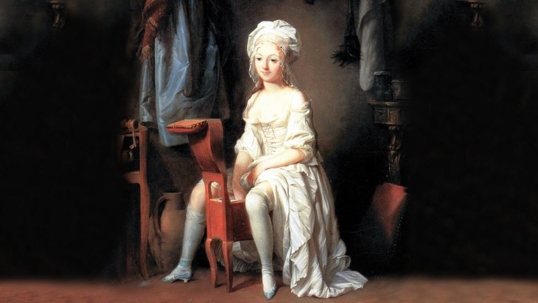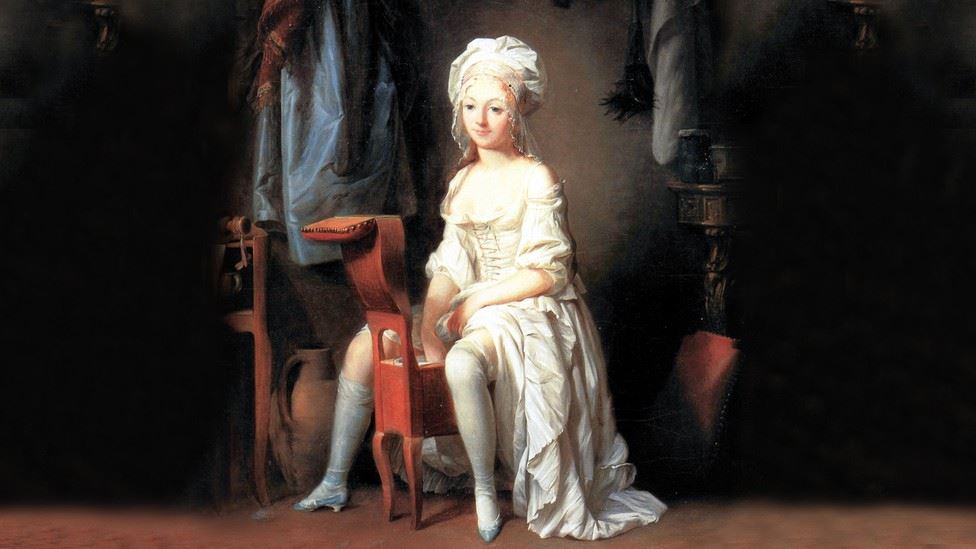Are you familiar with a great plumbing device, the bidet?
One of the best plumbing innovations ever is a bidet. For more than four hundred years, other countries in the world embraced the concept, but strangely, the United States shunned, feared, and resisted the bidet.
Finally, the national reluctance to embrace a technology proven and accepted by the rest of the world is changing.
While currently only 12% of the population of the United States has regular access to a bidet, that number is changing, with more and more people purchasing new toilets or attachments that provide the cleansing capabilities of the bidet to an ever-increasing number of bathrooms across America.
What is a bidet?
A bidet is basically a way to cleanse your private parts with water whenever you use the toilet.
It started in the 1600s, in France, before the advent of running water. Wealthy royals wanted to clean their private parts after using the chamber pot, and they had plenty of servants to haul water.
A bidet was a box-like fixture that incorporated a water-filled basin in its structure. The built-in basin would be kept full, and then the royal person could straddle the box and splash water over their privates, washing clean.
Why is it called a bidet?
Bidet, pronounced “Beh-DAY,” is a French word meaning “pony” or “tiny horse” that is used to define this device for two distinct reasons:
· The washing of private parts was often needed after riding horses which was the most common mode of transportation in the days before motorized vehicles.
· The device itself was built to straddle, much as you would mount a horse.
A person could squat over the basin or sit on the box frame surrounding the basin.
Popular acceptance of the bidet
After the 1600s when the bidet was a fixture in the residences of wealthy people and royalty, it grew in popularity and was common in most upper-class homes throughout Europe.
One story claims that the use of bidets was so common that in 1793 right before Marie-Antoinette was guillotined, a red-trimmed bidet was brought to her dark, dank prison cell so she could “freshen up” before dying.
By the 1700s when almost everyone was using a bidet to keep clean, bidets began to be built with a pump handle that would push spray up from a refillable water tank. No longer did you have to even get your hands wet to keep your parts clean.
Running water indoors was implemented in the 1800s, and by the end of the century, many bathrooms had it. Bidets were moved from bedrooms and boudoirs to the bathroom where they could be supplied with water and no longer had to depend on servants to haul the water.
The world accepted and loved the bidet
Europe. South America. The Middle East. Asia. Other countries embraced the bidet. They understood the simple power of rinsing with water to get rid of dirt.
The bidet is so widespread now that 80% of the world considers the bidet a standard bathroom accessory.
In Italy, it’s a legal requirement that all homes and hotels include bidets.
Here in the States, only about 6% of the population has a bidet in the bathroom, but that figure is changing, with a rapid rise in popularity since 2020.
Why did Americans shun the bidet?
Remember your history class that taught about the strait-laced Puritans? For eons, much of the population avoided talking about feminine anatomy and anything to do with sex. The cleansing of one’s private parts seemed too intimate a topic to confront; therefore bidets were taboo.
During World War II, American servicemen saw bidets all over Europe but most often in brothels and bordellos. The bidet became a symbol of sex, an instrument of hedonism, decadence, and fallen women. Our soldiers weren’t about to come home and introduce the bidet into their homes.
The first American to try to promote bidets
It’s not as if ALL Americans were afraid to introduce the idea of hygienic cleansing.
In 1928, John Harvey Kellogg ran the Battle Creek Sanitorium. Dr. Kellogg was a prominent physician and wellness guru who promoted holistic healing and non-traditional medical practices, like extremely long baths and electric light therapy. His clients included celebrities of the era like Thomas Edison, Henry Ford, Sojourner Truth, and Amelia Earhart.
Kellogg was convinced that water was therapeutic and hygienic. He was so convinced, in fact, that he invented a nozzle sprayer that could attach to the toilet and shower the private parts of his patients.
It never took off.
Lucky for us, one of his other inventions did.
John Harvey Kellogg also invented cornflakes!
The second promoter of bidets
More than half a century later, another American tried to get the public to use bidets.
Arnold Cohen’s father had a disease that caused him literal “pain in the butt.” Cohen created a device that would help based on research from doctors that proved that bidets heal rashes, help with hemorrhoids, and reduce the amount of toilet paper needed.
Arnold Cohen designed and patented what he called the Sitzbath in 1964, creating his own company called the American Bidet Company. The Sitzbath was a bidet that was built into a toilet seat and sprayed warm water and then warm air. “The Ultimate Bathroom Fixture!” the advertisement declares. Cohen was convinced that the benefits of the product would win over the public. (Didn’t everyone want to be “spic-n-spanned from front to rear"?) But even with Cohen’s advertising prowess, he couldn’t find a way to promote the Sitzbath that people would respond to.
Some sponsors didn’t want to sponsor so intimate a product, and Cohen found that most people just weren’t open to talking about “tushy washing 101!”
America’s reluctance was Japan’s gain
Cohen didn’t give up on what he knew was a product that would be accepted in other parts of the world. He took his product to Japan and met with leaders of the TOTO company there.
TOTO took Cohen’s design and continued to advance it, and by the end of the 1980s, Japan had fully embraced the “washlet,” a combo toilet and bidet.
Cohen’s invention was the precursor of the smart toilets of today. Most home improvement stores now have a wide variety of bidets, including those built into fancy toilets with options for lighting, different water pressures, angled spray wands, temperature controls for water, and air-drying vents. Simple toilet seat attachments also exist.
“Oh, the times, they are a-changing!”
During the global COVID pandemic, American attitudes toward bidets started to change for three reasons:
· People focused on being cleaner and more germ-free.
· Toilet paper was hoarded and, in some cases, in short supply.
· Remote work became common, giving more time at home, with many people interested in upgrading their home’s fixtures and décor.
All of those factors led to an increase in the purchase of bidets, and the global bidet market is projected to grow at a compounded annual rate of 9.2% from 2020 to 2027. The growing popularity of bidets in the United States will contribute to that market, pushing it to a 2.55-billion-dollar market by 2027.
More and more people are purchasing bidets and embracing the technology the rest of the world has been using for centuries.
44% of the people in a recent survey said they viewed bidets as a “sleek and luxurious addition to any bathroom.”
The shift in attitude toward bidets is most obvious in the fact that of the survey respondents, 43% of the respondents thought bidets should be included in hotels and 19% thought they should be a requirement in restaurants.
The benefits of using a bidet
Joseph Gayetti, an American, introduced toilet paper infused with Aloe in 1857.
It was wildly popular and has become our normal “go-to” bathroom habit. Here’s why humans s have always had a love affair with toilet paper. Americans have been using toilet paper all their lives and know nothing different. They love toilet paper so much that it’s hoarded and is the one item that no family ever wants to be without.
But switching from toilet paper to bidets has many benefits:
Toilet paper use:
The average person uses 57 sheets of toilet paper each day. That’s a lot of trees cut down to create a paper that is flushed down the toilet. The paper industry is responsible for 40% of the world’s deforestation.
Every year, 227,000 trees are used just to create the 7 BILLION rolls of toilet paper sold annually.
Bidets eliminate the need for so much toilet paper, saving money and conserving the earth’s valuable lumber resources.
Elimination of “flushable” wipes
Americans adopted the use of flushable wipes with the advent of Dude Wipes marketing and the belief that these products would make us cleaner, be flushed down the toilet, and be dissolved.
But that is NOT the case.
Yes, “flushable” wipes can be flushed down the toilet, but that doesn’t mean that they then dissolve once they disappear. Flushable wipes are nice for you but TERRIBLE for your toilet!
Because those wipes don’t disintegrate quickly once they’re flushed, they pile up in the sewers. When you get a huge pile of flushable wipes that are soggy but not dissolved, they mount up in piles called “fatbergs,” nasty, slimy mountains of fiber that’s been used and flushed down the toilet.
In 2018, New York City had more than 2,000 fatbergs that they had to break up. In London, one fatberg that weighed more than eleven double-decker buses clogged the sewer!
Bidets replace the need for flushable wipes, sending only water down the sewer and preventing fatbergs and other ugly side effects of paper products.
Birds and “behinds”
More and more Americans are finally seeing the advantages of bidets in bathrooms. No longer a device only for the rich, bidets are now available at home improvement stores for a price that most people can afford.
With the ability to save forests, save money, and improve hygiene, bidets are a boon to your behind and a great investment for your home.
Think of it this way:
- If you get mud smeared on your hand, do you wipe it off with toilet paper or wash it off with water?
- If you get bloody from a cut, do you clean it with toilet paper or wash it off with water?
- If a bird poops on you, do you wipe it away with a dry piece of paper or wash it off with water?
A dirty derriere deserves a refreshing splash of water from a bidet, not just an ineffective swipe of tissue-thin paper!
ServiceOne loves great plumbing
ServiceOne understands plumbing and will beautify your bathroom with a bidet at your bidding!
Whether you need a new sink, new garbage disposal, new water heater, or a new toilet/bidet combo, we can easily and quickly install it for you.
We can make repairs, check for leaks, and clean drains.
ServiceOne is here to help you with any plumbing, air conditioning, heating, or drain-cleaning needs you have.
Call us.


